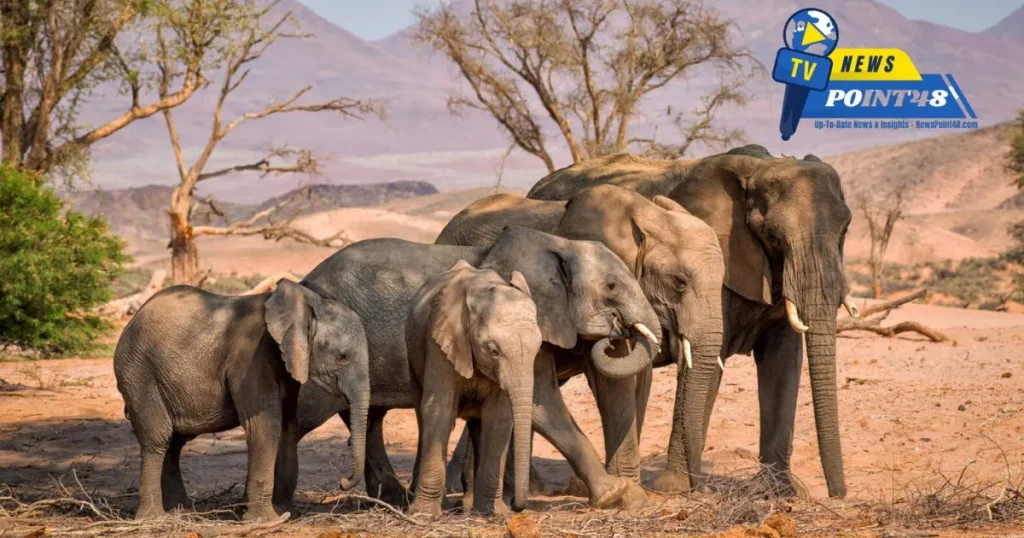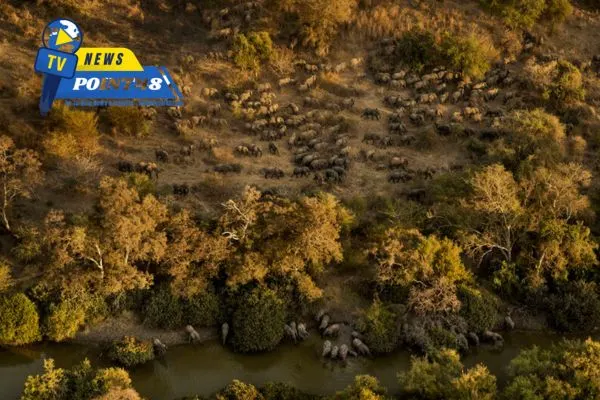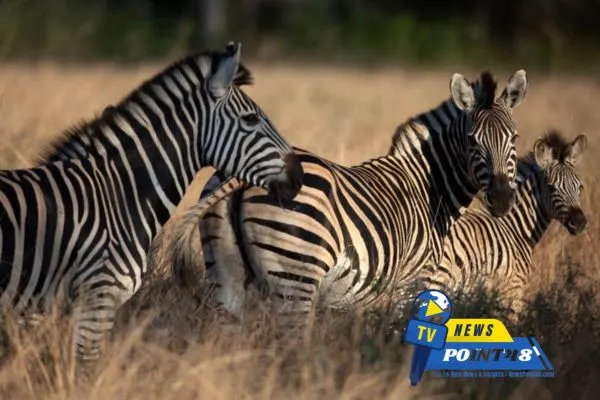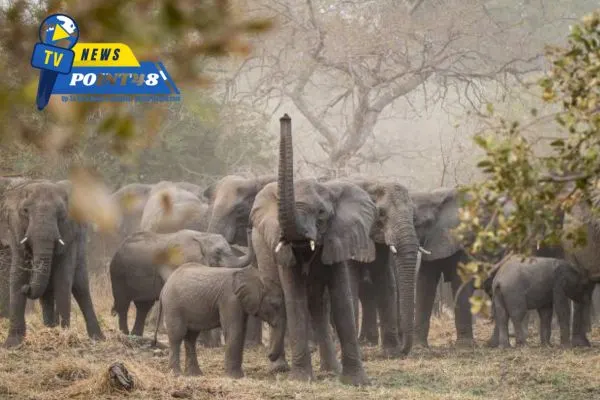
Deep in the African continent, a national park that was once looking over the cliff is undergoing a wonderful transformation. The identity of this beautiful African land was buried in silence for many years thanks to poaching, war, and environmental degradation. Still, recent conservation activities have managed, so to speak, to bring this land to life. Geographically, it sounds like an interesting story about nature coming back to life, but the balance of nature was restored by people and their picture may be drawn as a mathematical equation. The restoration of this park gives hope to all the other similar ecosystems in danger anywhere in the world. Long Silenced, an African Park Portfolio is revived
The History of the Park’s Creation and its Hurdles
The park now found in the sparsely populated area of Africa, had previously been the center of a large population of wildlife in the continent. Lions and other large herds of elephants, rhinos, and other animal species were free to traverse its wide stretch of savanna and forests. Unfortunately, as the millennium made its way, certain interventional factors started tearing the delicate ecosystem of the park.
Poaching and Illegal Wildlife Trade:It was during a time of creases in political systems that poaching became very prevalent. Major targeted animal species, elephants and rhinoceros, underwent excessive hunting due to desires for ivory and horns that fed the international animal trade. The wildlife population back in the park dwindled, and the once boisterous view of Paradise suffered eerie silence.
Human-Wildlife Conflict:As natural resources began diminishing, the communities living around the park embraced it to make ends meet. Protection I and the other beaches provide, illegal farming methods, cutting trees down hamster sakai, and even overgrazing devastated infrastructure leading the park to the edge. Still, as human-wildlife activities became common, the few left animals were left to scrounge for space and other necessities. Long Silenced, an African Park Portfolio is revived
Neglected Infrastructure: Infrastructure management was also not over-civilized especially as the particular region was caught up in abject economies and politics. The ranger posts were abandoned, there were few or no anti-poaching missions, and money for conservation was barely released. What was previously a beautiful natural wonder has become an empty wilderness. African Park
The Road to Recovery

Nonetheless, barely two over the developments. Such collaborative restoration goals have been sought by these stakeholders in the past two decades seeking either to revive the park’s ecosystem or reverse the decline of animal diversity in the area while working efforts for human development.
Conservation Partnerships: The development of strong partnerships to address the conservation challenges faced by the park has been one of the primary driving forces behind the recovery of the park. International agencies offered essential funding and technical skills, whilst, at the same time, local governments enacted stricter laws against poaching and land grabbing. Additional anti-poaching, protection, and conservation units were formed and modern means of surveillance, such as GPS and drones, were employed for wildlife African Park protection.
Community Involvement: It was important to get the communities, that lived around the park, involved. It was understood by the conservationists that it’s hopeless to expect the long-term protection of the park when the very people who use the land are not supportive of such initiatives. People were provided with incentives like better education, health facilities, and alternative sources of income if they adhered to conservation practices. Long Silenced, an African Park Portfolio is revived
Similarly, ecotourism activities presented a unique economic motivation for the local people to conserve the park. As the number of animals increased, so too did the number of tourists who came with the much-needed revenue to the area. Lodges, safari tours, and other forms of tourism generated employment for the local people reducing the pressure of environmentally destructive activities such as illegal logging and farming. Long Silenced, an African Park Portfolio is revived
Efforts for Restoration of Habitat:Similar to measures against poaching and community involvement, wide-scale habitat restoration activities were initiated. Campaigns to plant trees, restore wetlands, and eradicate invader species have assisted the park’s regeneration. The aim was not only to safeguard the animals but also to bring back the complete environment so that it could flourish once more.
The Revival of Wildlife

As the park rehabilitates, perhaps one of the more glaring indicators is the return of animal wildlife. Once in crisis elephants, rhinos, lions and many other notable animals have begun to increase once again due to effective measures against poaching and restoration of marine reserves.
The Comeback of the Big Five: Taking the most extensive beating from poachers was the “Big Five” of the park; elephants, lions, leopards, buffalo, and rhinos. They are slowly, but surely making growth like never before. The population of elephants, which came down largely because they were hunted for their ivory is on the rise. Now, even with the provided security, rhinos have been reproducing in the last few years, which is a big win in the war against their extinction. Long Silenced, an African Park Portfolio is revived
Predators on the Rise: Only a few years ago, it often felt that the population of lions in the park had been completely eradicated. Most thanks to human intervention, they have started thriving again. Such large predators are essential in keeping an equilibrium within the food chain, regulating the number of prey. Progressively, leopards and cheetahs, both hard to find and already endangered, are also going up in numbers suggesting that the food web in the park is coming back to stability once more.
Birdlife and Biodiversity:The restoration of the park has not only benefited the large mammals but includes even the small animals. For instance, birds, reptiles, and amphibians have all gained from remnants of habitat restoration as well. Wetland regions within the park that hosted migratory birds are now witnessing their return in droves, which indicates the success of the ecosystem’s rehabilitation. Furthermore, new members of the plant and animal kingdom – species that were hitherto undocumented in the specific regions – have also been noted as becoming part of the flora and fauna of the rejuvenated regions, increasing their diversity. Long Silenced, an African Park Portfolio is revived
Challenges and Ongoing Efforts

The inspiring recovery of the park however is not without drawbacks. The most serious problem is, of course, poaching, especially of elephants and rhinos – the most valuable species. There is a need for sustained fuel and support for anti-poaching patrols to operate effectively and relevant stakeholders in the conservation efforts are pushing for more influential measures on wildlife offences.
Climate change is another critical issue. The park’s wildlife habitats are at a higher risk of changes in climatic conditions such as extended dry seasons and increasing wildfires. While efforts are being focused on installing adaptive measures of climate change in the park’s management plans, the menace still exists.
Sustained support must also be offered to local communities to ensure that they are motivated to help with the preservation of the ecosystems. With the rise in ecotourism comes the risk of over-development or over-utilization of natural resources. This strife between tourism and conservation needs to be and is one of the keys to the long-term survival of the park. Long Silenced, an African Park Portfolio is revived

No Comments
Если нужно автоматизированное размещение ссылок, можно базы хрумера купить у проверенных поставщиков.
Your comment is awaiting moderation.